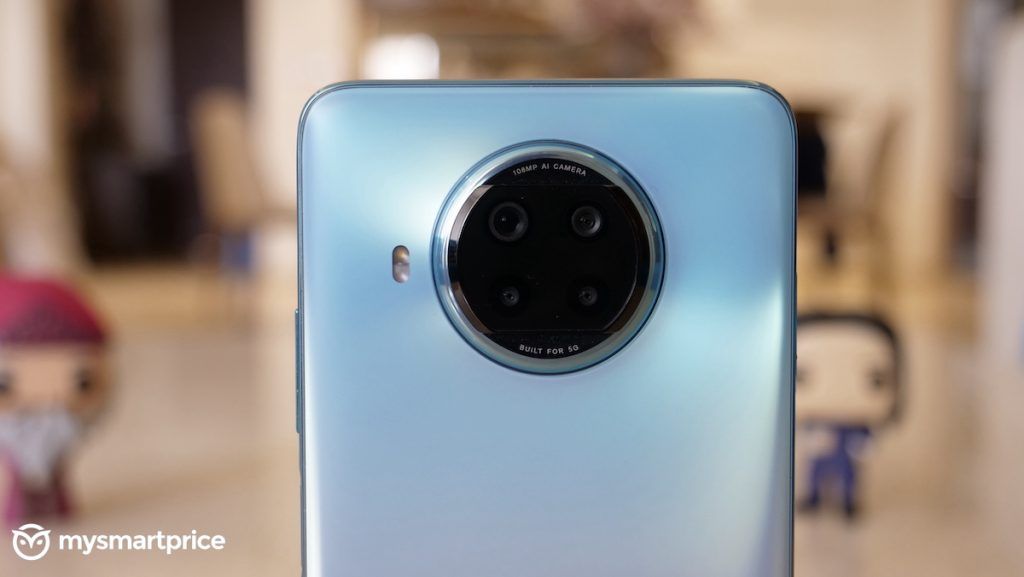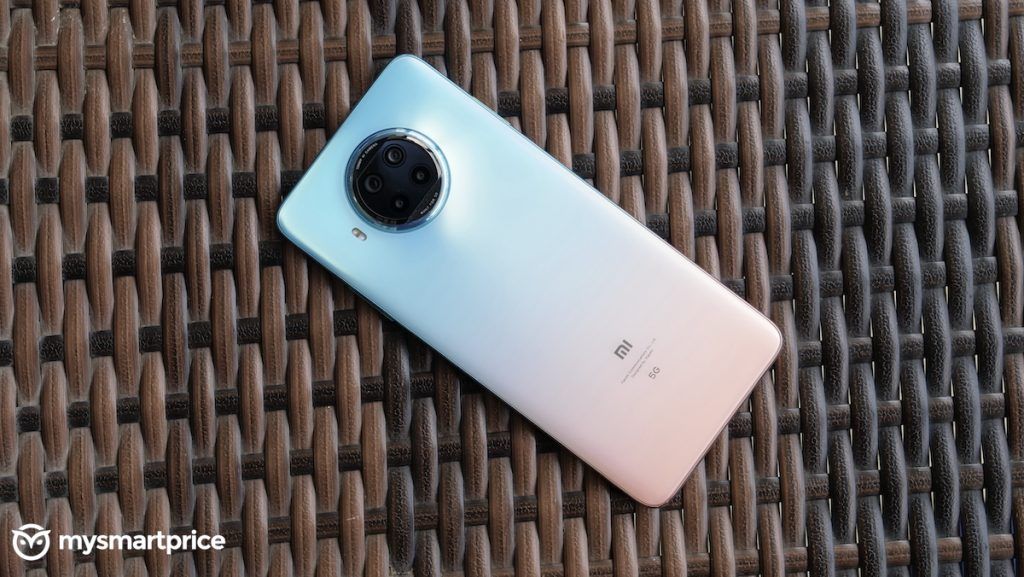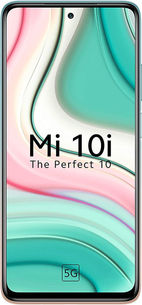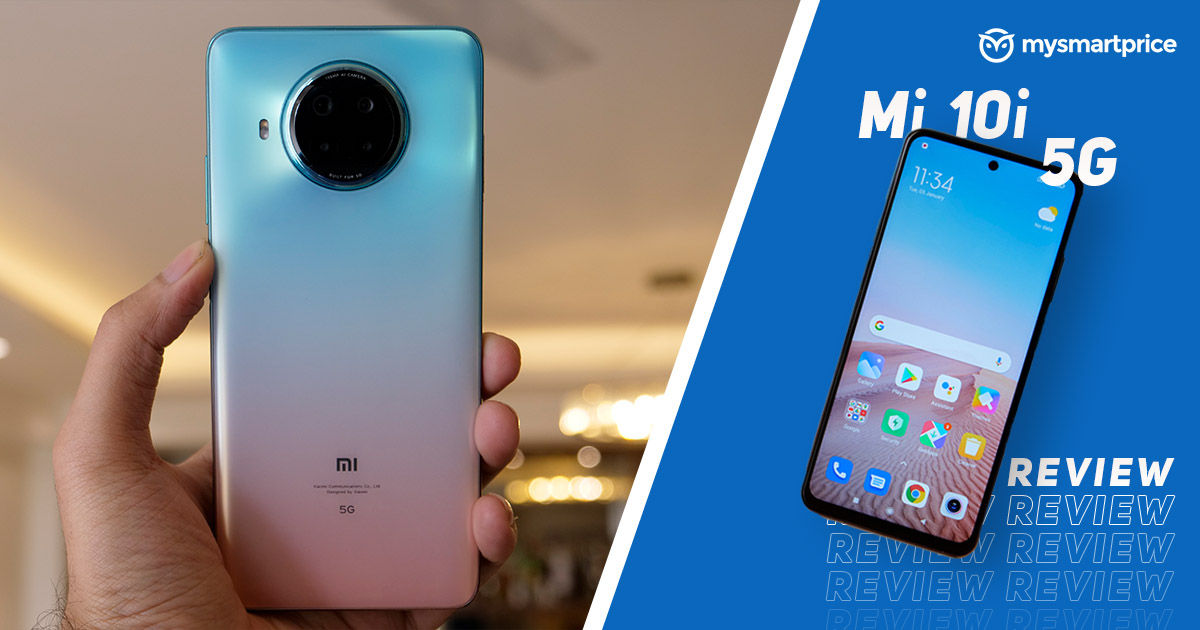
The mid-range smartphone onslaught continues in 2021! Xiaomi has entered the arena with the Mi 10i to take on the Nord, V20 Pro, and the Galaxy M51. Xiaomi says the i in the name Mi 10i, indicates India and that this is a special variant for the country with a 108MP camera. Yes, if you compare it to the global Mi 10 Lite with a 64MP camera, the 108MP camera is the added upgrade. But, truth be told, this is essentially a repurposed Redmi Note 9 Pro 5G that launched in China recently. The specs are exactly the same.
But, let’s not try to dissect Xiaomi’s nomenclatures for different regions because one needs a special PhD to understand the permutations and combinations.
What we need to find out is if the Mi 10i is the new best mid-range smartphone for Indian consumers. Let’s get down to my review.
P.S. our reviews scoring system has changed in 2021. Therefore, you will see lower scores than usual. Thanks.
Mi 10i design: colour me pretty
We were sent the absolutely fresh Pacific Sunrise colour that is a gorgeous gradient of pastel shades. This colour, in and of itself, could be a selling point for many folks. My wife, who is generally critical of gradient finishes on phones, actually liked this one. There are a couple of other sombre Blue and Black variants, if you prefer understated elegance instead.
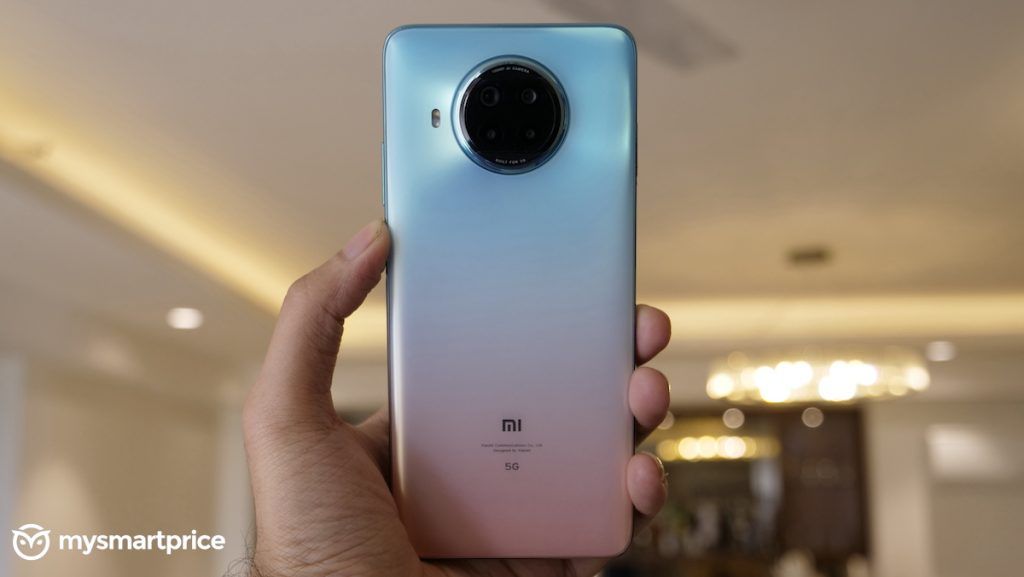
Now, on the rear you will find the raised circular ring, inside which is a rectangular camera module, which is also raised. This is very similar in design to the Poco X3. It looks alright, if you ask me. I am more enamoured by the gradient finish that feels like a breath of fresh air. Anyway, the rear and the front are both protected by Corning’s Gorilla Glass 5, which is fantastic. And, the frame is made of plastic. The phone weighs 214.5gm and is 9mm thick. I am not a fan of phones that weigh above 200gms to be honest, but the weight distribution on the Mi 10i is excellent. I found it easy to hold and use despite being fairly big. It is definitely more handy compared to the Poco X3 for sure.
As for ports, buttons, and other hardware add-ons, Xiaomi leaves no stone unturned. You get everything you can ask for. The power button on the right edge doubles up as the physical fingerprint scanner. It can unlock your phone really fast. Above it is the volume rocker, which offers great tactile feedback. On the left, you get a hybrid slot with support for two nano-SIMs, or one SIM and one microSD card at a time. On the top, there is a mic and an Infrared port. At the bottom, you get the Type-C port, a headphone port, and a speaker grille that doubles up with the earpiece to work in a stereo setup. My only concern is the ports are not symmetrically aligned at the bottom and that is such an eyesore. Oh by the way, you also get a tiny white notification LED right next to the earpiece.
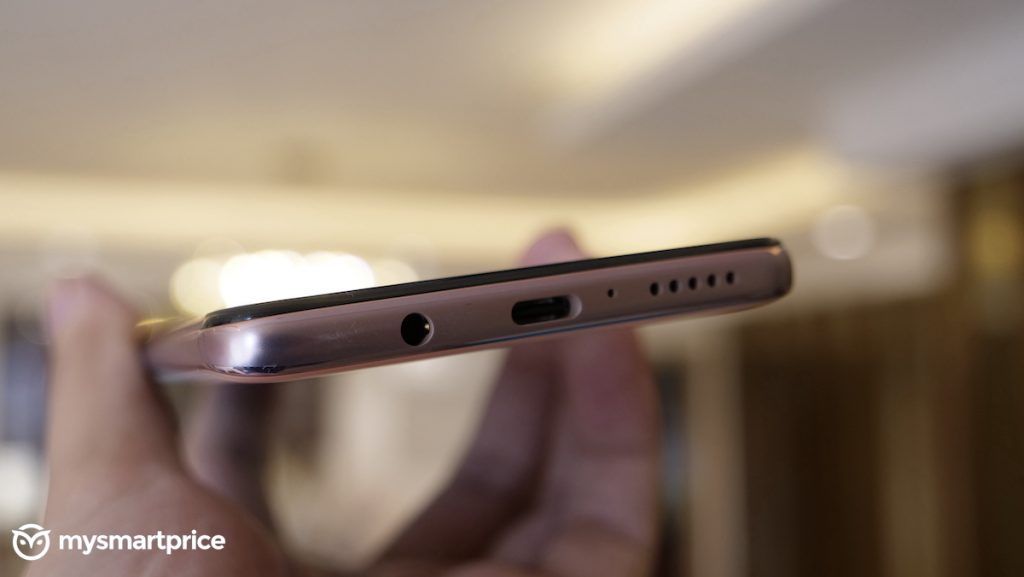
All in all, the phone not only looks good but is also extremely functional. Excellent job, Xiaomi.
Mi 10i display: the high refresh rate factor
Yes, the Mi 10i comes with a big 6.67-inch IPS LCD panel and that could be a let down for many folks. But, Xiaomii adds a 120Hz high refresh rate option with Adaptive Sync setting to soften the blow. Anyway, Adaptive Sync is essentially a smart variable refresh rate technology that uses a smart algorithm to identify the type of content to switch the FPS on the fly. However, what I found odd is that it is slightly weird in its implementation. While scrolling through Twitter or Facebook feed, the display switches to 60fps setting, instead of scrolling at 120fps. But, the problem doesn’t exist for Instagram. Could be a measure to save battery life. I am not so sure.
Now, as for the 120Hz refresh rate, it feels fine on the SD750G but it is not like the experience is entirely stutter free. I did face the occasional hiccup during my time with the phone. Moving on, the display can touch a max brightness of 450nits, which is not the best. But, it is fairly bright and legible in bright sunlight. Furthermore, you do get Widevine L1 certification and HDR 10+ certification as well. HDR content looks good enough but you can watch it only on YouTube and Prime Video for now. Netflix is limited to HD.
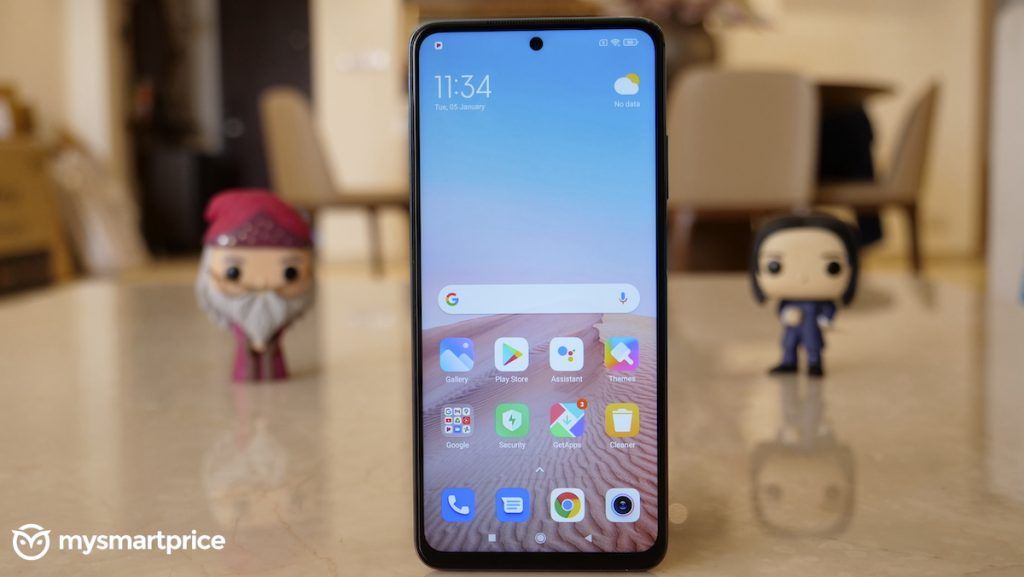
You also get the option to change the display’s colour settings from the options. I’d suggest you switch out from Automatic to Standard mode because Automatic mode tends to crank up the saturation and make visuals look unnatural. I found it extremely unappealing, especially when evaluating pictures shot using the phone from the in-built Gallery app. I also did a customary check for light bleed and there was a slight white light bleed from the edges but nothing too bad. This is par for the course for IPS LCD panels.
To sum it up, the display on the Mi 10i is good but the 90Hz AMOLED panel on the Nord, still has to be my favourite in this price range.
Mi 10i camera: best in class
Coming to the most interesting part of the Mi 10i, the 108MP main camera on the rear. The rest of the setup are just fillers. So, if you want to know how it performs in detail, do check out my camera comparison against the OnePlus Nord and the Samsung Galaxy M51. But, let me quickly break down my evaluation.
- The Mi 10i’s 108MP Samsung HM2 camera has a 0.7-micron pixel size sensor and does a 9-in-1 pixel binning to bump up the pixel size to 2.1-micron pixel size. You get 12MP outputs that are sharp in detail with crisp textures, offer fairly natural colours, excellent contrast, and pretty good dynamic range performance as well. In fact, I liked the HDR performance better than the Mi 10T Pro. Beat that. If you have ample light, the algorithm doesn’t do any heavy noise correction and lets the details shine. Which is why you will see noise in the shadow-heavy portions of the image.
- Even in bright indoor lights, the colour temperature, the exposure control, and the details are spot on.
- The going gets a little wonky when the algorithm tries to compensate for the small sensor size’s inefficiency in low light situations. I noticed a lot of artificial over-sharpening and digital artifacting, making images look heavily doctored. Which they were. That said, I really like the Night Mode’s ability to retain the real colours and control the exposure well.
- When it comes to the front camera performance, I am not a fan of the Mi 10i whether it is audio or video. If you want a selfie-centric phone, I’d suggest you look at the Galaxy M51 or the vivo V20 Pro.
- Talking about video, the Mi 10i tops out at 4K 30fps video recording using the rear camera and there is no stabilisation either. Super letdown. For videos, the Nord and the M51 are your best bets.
- Coming back to the plus points of the Mi 10i, the Portrait pictures look fantastic with an excellent edge cutout algorithm and good looking depth-of-field effect as well.
- The ultrawide angle pictures don’t go too wide but look good, nonetheless. However, macros are really average.

The Mi 10i is definitely the best camera you can find in this price range if the rear camera performance matters the most to you. In any case, the secondary, tertiary, and other extra cameras in this price range offer average performance. I hope some of the issues, especially the low light artifacting can be fixed by a software update. Also, for the sake of transparency, let it be known that I was using a very early version of the software.
Mi 10i software: feature rich but filled with bloatware
The Mi 10i runs on Android 10 with MIUI 12 on top of it. In general, Xiaomi phones don’t follow Android updates with the same kind of consistency that other brands do. Having said that, I am disappointed that the Mi 10i doesn’t run on the latest Android version. The first thing I noticed is that the Mi 10i is filled with bloatware and unnecessary apps. I deleted most of them. But thankfully, there were no ads or pesky notifications either.
Interestingly, the Mi 10i comes with Google’s stock Phone dialler and Messaging app. Looks like we’ll start seeing this more often in phones that cost above Rs 20,000 in 2021. Now, MIUI 12 is extremely feature rich and filled with heavy-handed animations. I particularly enjoy the Floating Window mode and the added security features. The Dark mode is great, you get the option to use Discover Feed in the -1 page. Mostly, if you are a sucker for overwhelming experiences instead of minimalism, MIUI 12 would be perfect for you.
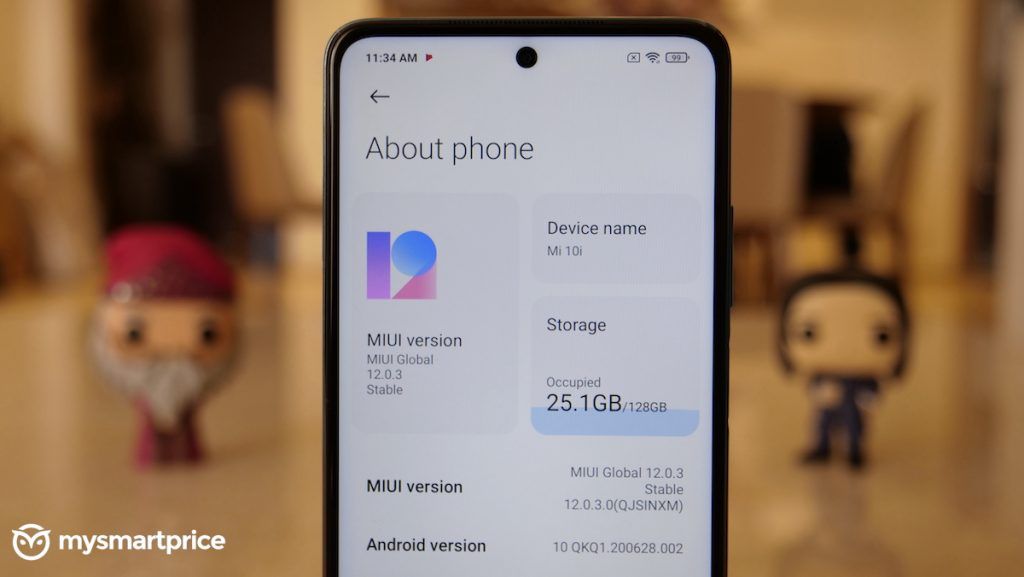
However, it is not without its own idiosyncrasies. Here are a couple:
- It irritates me to no end that resizing widgets is such a pain on the phone. I actually thought the feature doesn’t work.
- Also, at times, the animations stutter when you swipe up to open the multitasking carousel or when you swipe left to open the -1 page from the homescreen.
My personal preference in this price range is still Oxygen OS, which continues to be the most refined software experience. MIUI 12 is good but the bloatware and animations are annoying.
Mi 10i performance: good, consistent performance
The Mi 10i is only the second phone to come with a Snapdragon 750G SoC, after the Moto G 5G. It is almost as powerful, if not more, than the Snapdragon 765G. In AnTuTu, you can see that the Mi 10i actually beat the OnePlus Nord with the SD765G and the V20 Pro. The other reason for the higher score is the Mi 10i also comes with UFS 2.2 storage that offers faster Write Speeds in comparison to UFS 2.1.

Here’s a disclaimer folks, our review unit of the Mi 10i didn’t allow us to run Geekbench, GFXBench, or 3DMark. So, we don’t have numbers for those yet. With that out of the way, the day-to-day experience was fairly smooth thanks in part to the high refresh rate setting as well. But yes, there were unexpected stutters once in a while. Nothing to be alarmed about, but something I thought I should mention.
As for gaming, I played Call of Duty Mobile and you can crank up the graphics to Very High and Framerates to Max. Even after an hour, the phone didn’t heat up. I am genuinely impressed.

The stereo speaker setup gets loud enough and sounds clean with no distortion per se. What impressed me most, however, was the high fidelity output from the headphone jack. With the switch of a button my 1More Triple Drivers sounded extremely wide and detailed too. I am glad that Xiaomi has decided to buck the trend and offer an excellent wired audio performance. Audiophiles in the crowd are going to be happy to hear this piece of info.
Mi 10i network performance: 5G ready
So, the 750G inside the Mi 10i is a 5G-capable chipset and it supports almost all the bands that you will need even when you use it on an international trip. Unlike the Nord, which supports only one 5G band. Anyway, India doesn’t have 5G yet so there is no way to test it. But, the 4G performance on the Mi 10i was rock solid too. In fact, Wi-Fi was pretty strong on the 5GHz network as well. Call quality through the earpiece and the mic quality are both great too. So yeah, you are getting a solid telephony performance from the Mi 10i.
Mi 10i battery life: pretty damn good!
To power all this, the Mi 10i has a 4820mAh battery and you get a 33W charger in the box. In my testing, it could charge the phone from 0 to 100 in 58mins. Not the best, but definitely among the fastest charging phones out there. And the software offers excellent battery optimisation, including Adaptive Sync on the high refresh rate panel. I got close to 8 hours of SoT on a single charge, with my heavy usage, and you can easily expect to end the day with 10-20% of battery life left at the end of the day. This battery performance is definitely second only to the Galaxy M51, in this price range.
Should you buy the Mi 10i?
So, the Mi 10i is priced at Rs 20,999 for the 6/64GB variant, Rs 21,999 for the 6/128GB one, and Rs 23,999 for the 8/128GB one. These are steller prices. And, according to me, the Mi 10i is by far the best mid-range smartphone one can buy under Rs 25,000. Also, I was right when I’d tweeted out that Xiaomi was doing some clever marketing by showing up Amazon India listing before launch with a marked up price of Rs 24,999 for the 6/128GB variant. Smart tactic indeed.
Anyway, on the Mi 10i you get the best rear camera images, the performance is reliable, there is a fast high refresh rate panel, the design is great, so is the battery life, and, finally, you get stereo speakers plus a 3.5mm audio jack with high fidelity audio. What more could one want? That said, there are a few negatives. Firstly, it is not running on the latest Android version 11. Secondly, the IPS LCD panel is not the best display in this price range where AMOLED screens are a dime a dozen. And finally, the software is filled with bloatware.

Now, in comparison to the Mi 10i, the OnePlus Nord’s achilles heel is the camera. The Galaxy M51 doesn’t offer the same finish and the performance won’t match up to the Mi 10i. The V20 Pro is a great alternative, but it’s quite clear that the Mi 10i is much more affordable in comparison, offering better value for money. And, the Moto G 5G doesn’t match up in camera performance for sure.
So yeah, I have no hesitation recommending the Mi 10i. Xiaomi has clearly set a new benchmark for mid-rangers. And, the company has figured out a knack for creating benchmark phones, in different price categories, with a shockingly good consistency.
